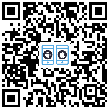

|
大多数汽车厂商在测试一款新车型的产品线时,首先会用相对廉价的工具试产一些原型车,如果车门大小合适,车身面板造型合理,仪表盘没有太大的缝隙,就会将这些廉价工具弃之不用,正式投入量产。 然而上个月特斯拉的CEO马斯克却对投资者表示,为了让Model 3轿车赶在此前承诺的9月份投入量产,特斯拉现在准备跳过试产阶段,直接订购更加昂贵的永久性设备进行量产。 马斯克的这一决定再次彰显了他对风险的极高容忍度,以及不顾行业惯常做法的坚定意志,不过这两点也正是特斯拉得以颠覆传统汽车行业的关键。特斯拉当然并非第一家企图压缩生产时间的汽车厂商,只是其他竞争对手都没有如此大胆,敢赌公司的生产战略一定会成功。 马斯克预计,Model 3的上市将使特斯拉的年销量暴增5倍,以特斯拉当前的烧钱速度,这的确是一个难以拒绝的诱人目标。 奥纬咨询公司(Oliver Wyman)的生产顾问罗恩·哈泊认为:“他想试试能从这个过程中挤压出多少时间和成本。” 特斯拉从一个名不见经传的创业公司到一家举足轻重的知名汽车厂商只用了短短数年时间,这种火箭般的速度远远超越了任何竞争对手。投资者们也对特斯拉的量产成功抱有信心。从1月份到现在,其股价已经上涨了39%。 不过目前也有一些值得警惕的迹象。一些行业专家指出,特斯拉订购的永久性设备都是为了生产几百万台汽车而设计的,不仅价格十分昂贵,而且一旦出了问题,它的维修和置换成本也是极高的。特斯拉当前在售的几款车型产量都不算大,尚且难以避免质量问题,而Model 3的产量更是预计将达到每年50万台,如果由于质量问题造成大规模的召回或保修,必然会导致成本的上升。 《消费者报告》(Consumer Report)的记者杰克·费舍尔认为:“这当然是一次试验。”费舍尔曾经对特斯拉的Model S和X两款车型进行过深入评测。他认为特斯拉是有可能迅速修正潜在问题并加快量产流程的。“否则他们就将面临一些意想不到的问题,而且要花很大力气去解决。” 马斯克是在上个月与部分受邀请的投资者通电话时透露他打算跳过“试产”环节的决定的。参与此次通话的一名投资者将有关细节发布在了Reddit网站上。 马斯克还表示,利用计算机进行模拟的“先进分析技术”能帮助特斯拉直接进入量产。 特斯拉拒绝确认关于此次电话的细节,也拒绝对其产品战略发表评论。 在特斯拉大赶工期的同时,其他老牌汽车厂商也没有等待观望。比如德国大众旗下的奥迪公司最近刚刚在墨西哥的一家新工厂启动了生产,而且奥迪不仅在生产工具上运用了计算机模拟技术,更是在整个工厂和整条装配线上都运用了这项技术,奥迪也因此自诩为这方面的行业第一。据奥迪表示,计算机模拟技术的全面使用,使得工厂的生产速度比以往加快了30%。 另外需要指出的是,奥迪公司曾参与墨西哥工厂建设的一位高管彼得·霍赫霍丁格,现在已经跳槽为特斯拉公司的生产副总裁了。 加快工具生产 一般来说,汽车厂商在通过有限试产测试其设计时,都会使用比较低端的且易于改造的设备进行试产,以便随时处理试产中暴露的问题。等大多数问题解决之后,厂商才会订购最终用于量产的设备。 据一位了解特斯拉的这一决定和特斯拉的产品线规划的消息人士称,公司之所以决定跳过试产,一定程度上也是因为吸取了之前的教训——2015年的Model X SUV试产时,由于低端的“软工具”试产设备导致的问题太多,甚至影响到了Model X的上市。 该消息人士还表示,由于期限卡得很死,特斯拉也没有时间通过这些“软工具”查找问题,只能直接订购永久性的生产工具。 该消息人士表示:“软工具对这个项目的帮助很小,说不定还会坏事。” 除此之外,特斯拉也学会了更好地改造最终的量产设备的方法。2015年,它收购了一家密歇根的工具制造公司,这意味着它能够以比以往快30%的速度生产主要的造车设备,同时成本也显著降低了。 特斯拉急于跳过试产的另一个原因是财务的压力。目前已经有37.3万名顾客缴纳了1000美元的定金,眼巴巴地等着排队提车。所以特斯拉越早将这款预计起售价35,000美元的Model 3投入量产,就能越早地将这130亿美元收入囊中。 自从特斯拉2003年成立以来,公司背负的财务压力就一直没有减小过。目前特斯拉仍未进入盈利状态。今年年初,马斯克还曾表示,公司已经到了“现金流耗尽的边缘”。而该公司光是2017年上半年的资本支出就高达20至25亿美元。 今年三月,特斯拉成功地拉来了12亿美元的新鲜资本,并将5%的股权卖给了中国的互联网公司腾讯控股,从而再次获得了一定的呼吸空间。 马斯克曾向投资者们畅想道,他的“外星无敌舰队”工厂将使用人工智能和机器人技术,以比人类装配工人快得多的速度生产汽车。 但是对处在重重监管之下的汽车行业来说,技术的发挥空间实际上是有限的。比如特斯拉依然需要拿几辆真车去参加美国政府强制的碰撞测试,因为美国的联邦法律不允许用计算机模拟的碰撞结果来代替真实的碰撞数据。(BT365的网址是多少) 译者:朴成奎 |
Most automakers test a new model's production line by building vehicles with relatively cheap, prototype tools designed to be scrapped once they deliver doors that fit, body panels with the right shape, and dashboards that don't have gaps or seams. Tesla , however, is skipping that preliminary step and ordering permanent, more expensive equipment as it races to launch its Model 3 sedan by a self-imposed volume production deadline of September, Musk told investors last month. Musk’s decision underscores his high-risk tolerance and willingness to forego long-held industry norms that has helped Tesla upend the traditional auto industry. While Tesla is not the first automaker to try to accelerate production on the factory floor, no other rival is putting this much faith in the production strategy succeeding. Musk expects the Model 3 rollout to help Telsa deliver five times its current annual sales volume, a key target in the automaker's efforts to stop burning cash. "He's pushing the envelope to see how much time and cost he can take out of the process," said Ron Harbour, a manufacturing consultant at Oliver Wyman. Investors are already counting on Tesla ’s factory floor success, with shares soaring 39% since January as it makes the leap from niche producer to mass producer in far less time than rivals. There are caution signs, however. The production equipment designed to produce millions of cars is expensive to fix or replace if it doesn't work, industry experts say. Tesla has encountered quality problems on its existing low-volume cars, and the Model 3 is designed to sell in numbers as high as 500,000 vehicles a year, raising the potential cost of recalls or warranty repairs. "It's an experiment, certainly," said Consumer Reports' Jake Fisher, who has done extensive testing of Tesla 's previous Models S and X. Tesla could possibly fix errors quicker, speeding up the process, "or it could be they have unsuspected problems they'll have a hard time dealing with." Musk discussed the decision to skip what he referred to as "beta" production testing during a call last month with an invited group of investors. Details were published on Reddit by an investor on the call. He also said that “advanced analytical techniques” – code word for computer simulations - would help Tesla in advancing straight to production tooling. Tesla declined to confirm details of the call or comment on its production strategy. The auto industry's incumbents have not been standing still. Volkswagen AG's (vlkay, +3.31%) Audi division launched production of a new plant in Mexico using computer simulations of production tools – and indeed the entire assembly line and factory - that Audi said it believed to be an industry first. That process allowed the plant to launch production 30% faster than usual, Audi said. An Audi executive involved in the Mexican plant launch, Peter Hochholdinger, is now Tesla 's vice president of production. MAKING TOOLS FASTER Typically, automakers test their design with limited production using lower grade equipment that can be modified slightly to address problems. When most of the kinks are worked out, they order the final equipment. Tesla ’s decision to move directly to the final tools is in part because lower grade, disposable equipment known as “soft tooling” ended up complicating the debut of the problem-plagued Model X SUV in 2015, according to a person familiar with the decision and Tesla ’s assembly line planning. Working on a tight deadline, Tesla had no time to incorporate lessons learned from soft tooling before having to order the permanent production tooling, making the former's value negligible, the source said. "Soft tooling did very little for the program and arguably hurt things," said the person. In addition, Tesla has learned to better modify final production tools, and its 2015 purchase of a Michigan tooling company means it can make major equipment 30% faster than before, and more cheaply as well, the source said. Financial pressure is partly driving Tesla ’s haste. The quicker Tesla can deliver the Model 3 with its estimated $35,000 base price to the 373,000 customers who have put down a $1000 deposit, the closer it can log $13 billion. Tesla has labored under financial pressure since it was founded in 2003. The company has yet to turn an annual profit, and earlier this year Musk said the company was "close to the edge" as it look toward capital spending of $2-2.5 billion in the first half of 2017. Tesla has since gotten more breathing room by raising $1.2 billion in fresh capital in March and selling a 5% stake to Chinese internet company Tencent Holdings (tcehy, +1.02%). Musk has spoken to investors about his vision of an "alien dreadnought" factory that uses artificial intelligence and robots to build cars at speeds faster than human assembly workers could manage. But there are limits to what technology can do in the heavily regulated car business. For example, Tesla will still have to use real cars in crash tests required by the U.S. government, because federal rules do not allow simulated crash results to substitute for data from a real car. |
最新文章




